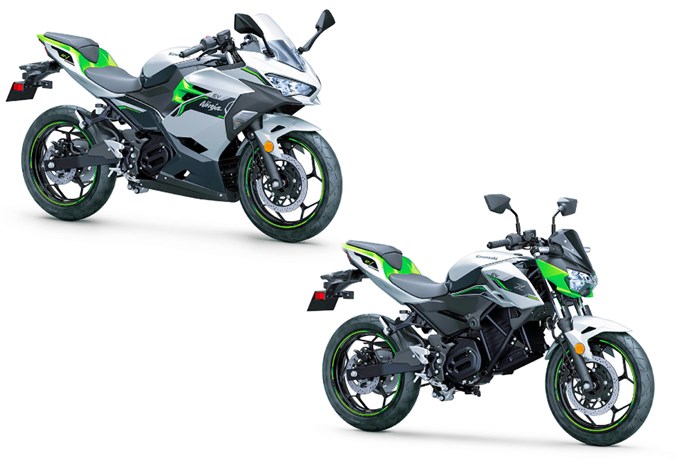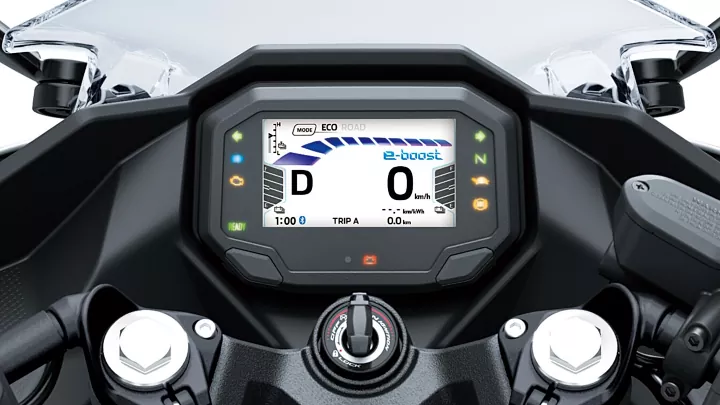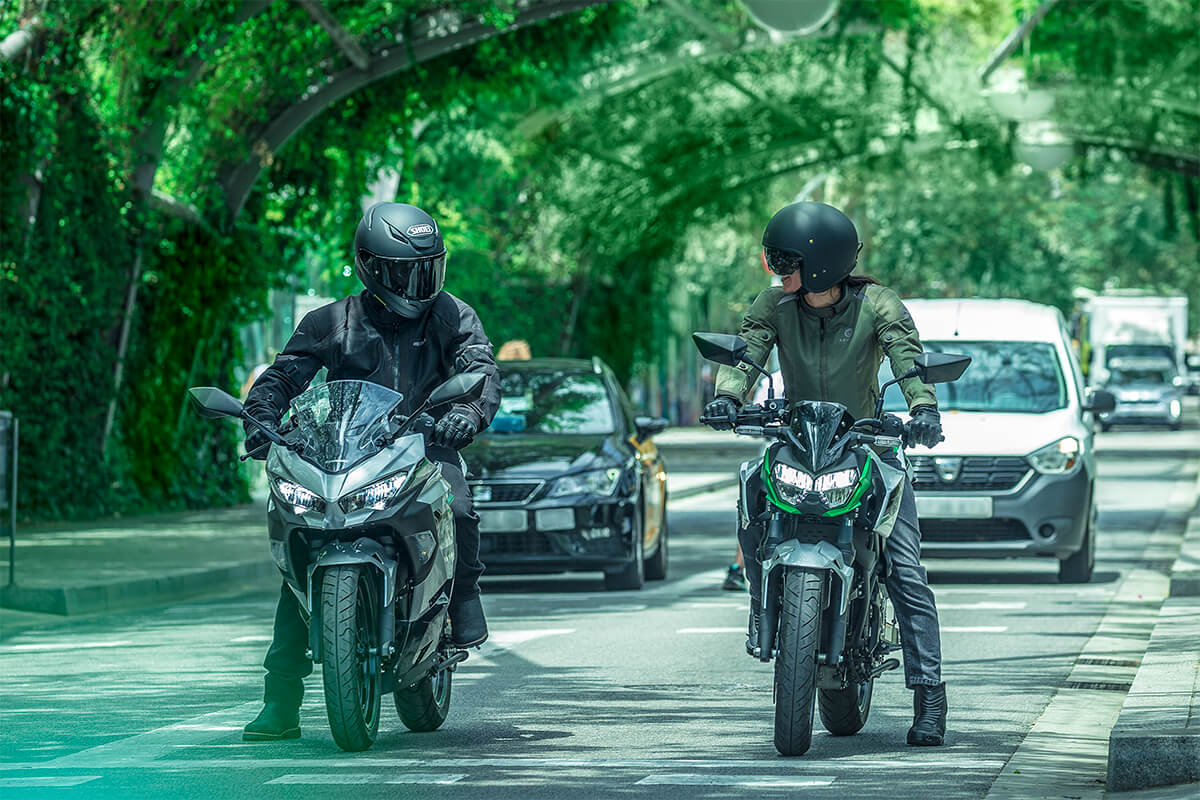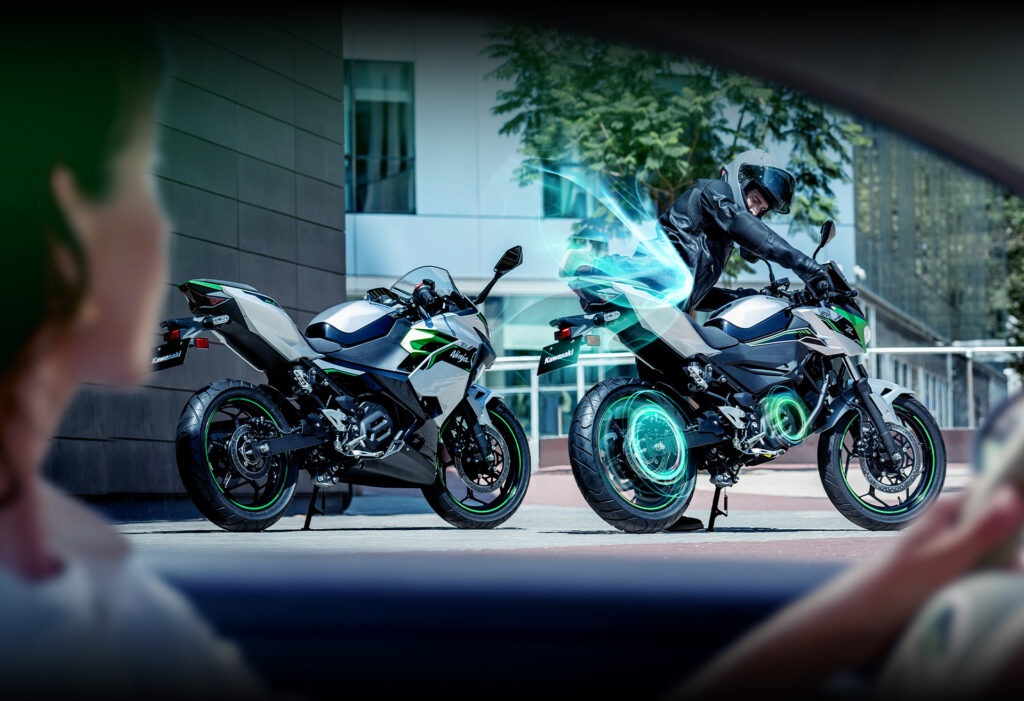The fully electric Kawasaki Ninja e-1 and Z e-1 were recently unveiled along with their specs. Both these fully electric bikes were on display back at EICMA 2022 with most of the powertrain details under wraps. These two are entry-level e-bikes that are comparable to the sporty e-scooters in India.
Kawasaki Ninja e-1 and Z e-1 Design and Chassis
The body styles of the e-1 and Z e-1 are very similar to their ICE and much bigger and more powerful counterparts – the Nina 400 and Z400. The battery packs are inside a steel frame, suspended by a 41 mm telescopic and monoshock setup. In place of the fuel tank, the bikes have a small 5-litre storage space.

The front tyre is 100/80-17 while the rear tyre has a size of 130/70-17 of both bikes. The braking department is handled by a 290 mm front disc and a 220 m disc at the rear with dual channel ABS as standard on both bikes.
Both the bikes have a lower seat height of 790 mm. The Ninja e-1 weighs 140 kg while the naked Z e-1 weighs 135 kg.
Kawasaki Ninja e-1 and Z e-1 features
Both bikes will get the same features such as a TFT display with Bluetooth connectivity and navigation support. There’s also a walk mode which when enabled, will move the bike forward or backward at 3 kph like e-scooters.

Kawasaki Ninja e-1 and Z e-1 Powertrain and Battery
In top riding mode, the Ninja e-1 has a claimed top speed of 84 kph while the Z e-1 is lower at 60 kph and in eco mode, the former stands at 60 kph while the latter will go approx. 56 kph.
There is also an e-boost function for both bikes that when activated, will give them a boost in situations like a quick activate. The e-boost will last 15 seconds at a time.

The top speed during the boost is 105 kph (road mode) and 72 kph (eco mode) for the Ninja, while the Z has a top speed of 105 kph (road mode) and 68 kph (eco mode). The battery packs send power to a motor that makes peak power of 9 kWh and 5 kWh power on average.
Speaking of battery packs, both the e-1 and Z e-1 are powered by two removable battery packs, both of these with a 1.5 kWh capacity. Charging time is slower for each pack at 3.7 hours, meaning total time will be near 7.4 hours.

Once the Charge drops to 35%, the bikes will automatically switch to Eco and the e-boost function will be disabled.
Kawasaki Ninja e-1 and Z e-1 India launch and expected price
Kawasaki has not made any official statements yet that indicate the bike to hit our shores, but Kawasaki does bring its big boys here like the unconventional and expensive Ninja ZX-4R. Also, recently the Ninja ZX6R is also making a comeback in India after 3 years so there’s a possibility the bikes will launch here, but it is yet to see how Kawasaki manages the pricing.

